- About
- Discover EaseUS
- Reviews & Awards
- License Agreement
- Privacy Policy
- Student Discount
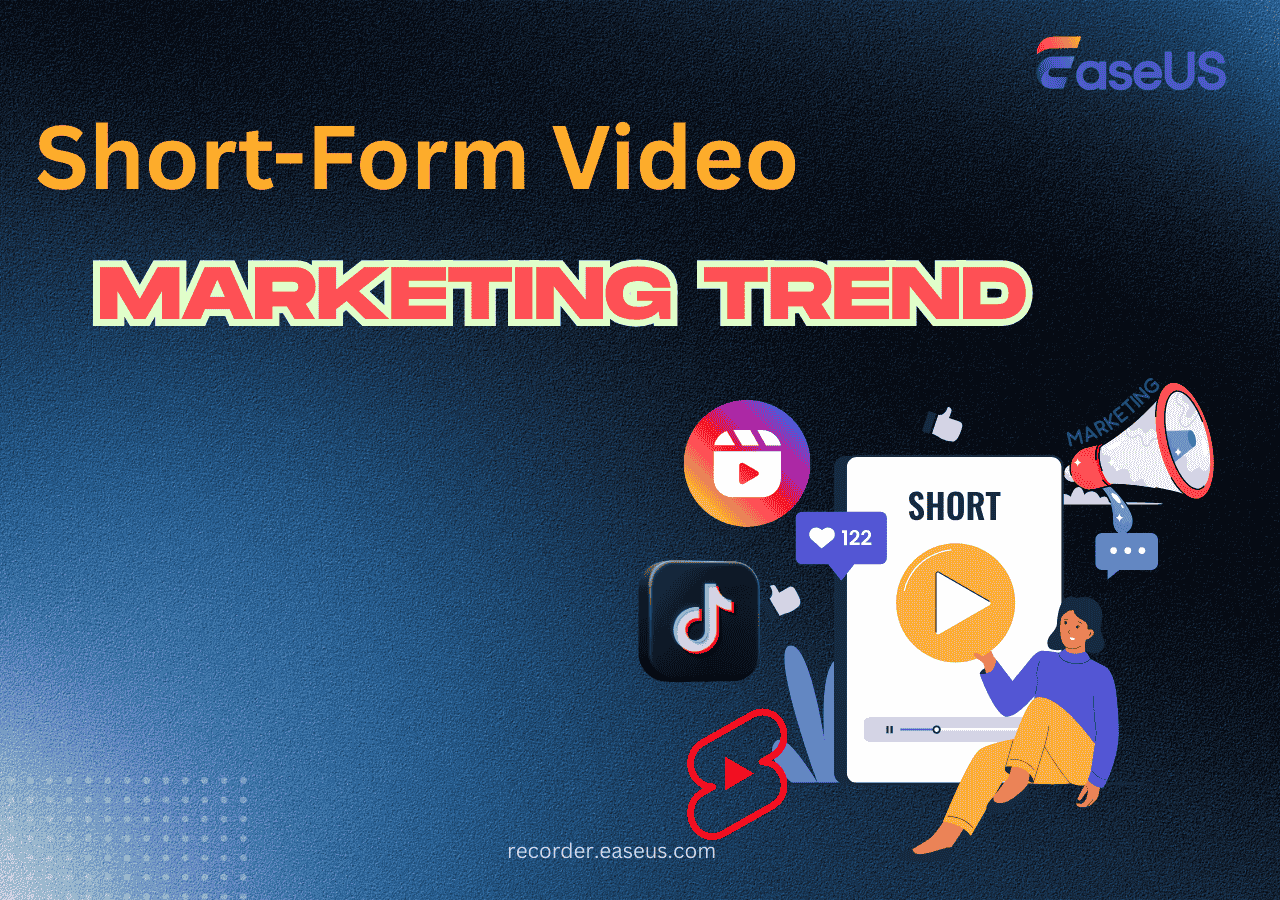
Over the past few years, the short-form video market has seen rapid, almost explosive growth, with more users and higher content consumption than ever before. Short-form videos have become one of the most engaging formats on social media, driving both attention and interaction. As a result, brands are increasingly turning to this format for marketing, using creative clips, challenges, and interactive ads to connect with audiences and strengthen brand presence, while also exploring new ways to generate revenue.
This report, from the EaseUS team, takes a comprehensive look at global short-form video marketing trends from industry dynamics and user behavior to platform ecosystems and marketing strategies, providing actionable insights for brands, advertisers, and decision-makers.
1. Short-Form Video Marketing Overview and Trends
The following section explores how short-form video marketing continues to evolve, highlighting global adoption, content trends, and platform innovations that shape today's most effective brand communication strategies.
1.1 Global Market Size and Growth
The worldwide short-form video marketing industry has experienced rapid growth in recent years. According to Business Research Insights, the market is projected to reach $28.952 billion by 2032, with a compound annual growth rate (CAGR) of 30.33%. This growth is largely driven by the continuous expansion of short-form video audiences and increasing investments in brand advertising.
👉For regional market distribution:
North America has the highest penetration of short-form video users and leads globally in brand marketing investment, followed by Europe, Asia-Pacific (exhibiting the fastest growth with a 12.6% CAGR), Latin America, and the Middle East & Africa.
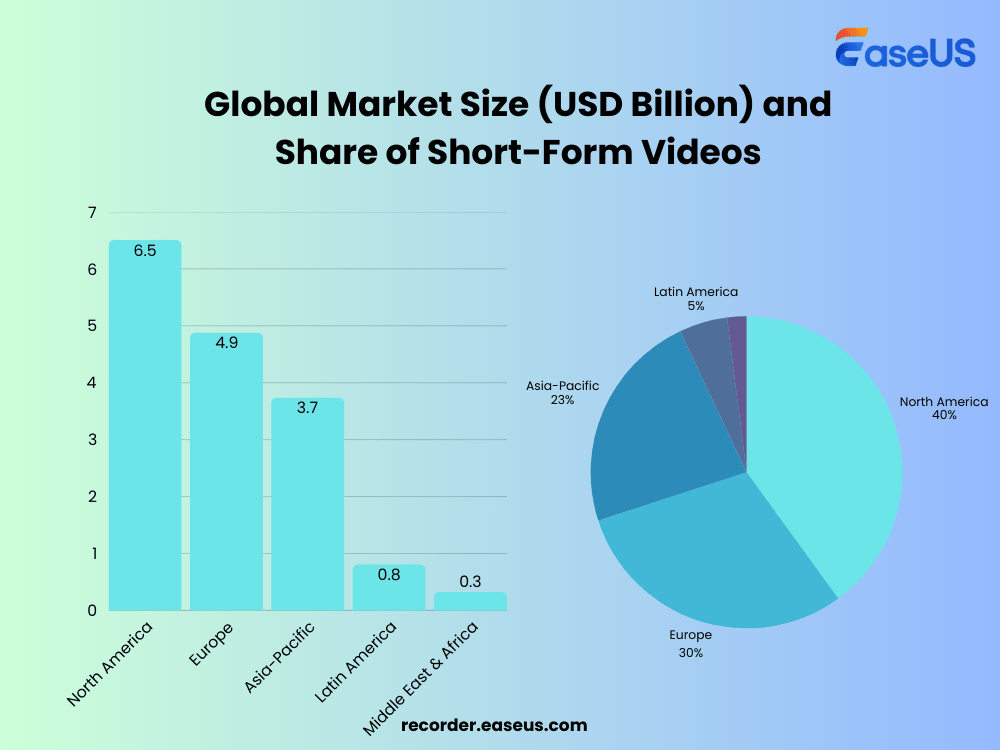
Source: Cognitive Market Research
👉For user engagement and advertising trends:
- Daily Active Users (DAU): Global short-form video platforms continue to experience a rise in daily active users.
- Average Viewing Time: Users spend an average of 1 hour and 16 minutes per day watching short-form videos. (Source: Firework)
- Advertising Investment:75% of marketers plan to maintain or increase spending on short-form video ads. (Source: Hubspot)
These figures highlight the growing reliance of brands on short-form videos for precise audience targeting and interactive marketing, generating significant commercial value for the industry.
1.2 Platform Development and Ecosystem
The rapid growth of global short-form video platforms has created a diverse marketing ecosystem for brands. Currently, TikTok, Instagram Reels, and YouTube Shorts are the most influential platforms internationally, attracting large active user bases while providing advertisers with rich creative tools and engagement opportunities.
| Platform | Monthly Active Users (2025) | Daily Views / Engagement | Key Advertising Tools & Formats | Platform Strategy & Focus |
|---|---|---|---|---|
| TikTok | 1.59 billion (+6.8% vs 2024) | High engagement, viral content | Hashtag Challenges, Sponsored Topics | Creator ecosystem, UGC-driven, viral content propagation |
| Instagram Reels | 2 billion | 140 billion daily views | Branded filters, Interactive stickers | Visual aesthetics, social sharing, reaching younger audiences |
| YouTube Shorts | 2 billion | 200 billion daily views | Skippable ads, In-stream ads | Creator diversity, content variety, broad creator & brand ecosystem |
Source: The Global Statistics, Teleprompter.com Team, DemandSage
💡Insights:
1. TikTok emphasizes user participation and viral content, making it highly suitable for campaigns aiming for high engagement and UGC generation.
2. Instagram Reels focuses on visual creativity and social sharing, attracting brands targeting younger audiences with interactive ads.
3. YouTube Shorts prioritizes content diversity and broad creator participation, suitable for brand awareness campaigns with scalable reach.
1.3 Content Formats & Emerging Trends
In 2025, the short-form video industry continues to evolve rapidly, with content formats and technological innovation driving brand marketing strategies. The following trends are shaping the ecosystem:
Diversification of Ad Formats & the Rise of Native Advertising
- Native video ads are becoming the preferred choice as they integrate seamlessly into user experiences, resulting in higher acceptance and conversion.
- According to Inbeat, 85% of users consider native advertising more trustworthy than traditional ads.
User-Generated Content (UGC) as the Dominant Force
- Platforms like TikTok and Instagram Reels serve as primary hubs for UGC, where brands collaborate with creators through challenges, polls, and duets to build community-driven marketing.
- Data from Popular Pays shows:
- TikTok users spend an average of 95 minutes per day on the app.
- Engagement on Instagram Reels is 300% higher compared to standard video posts.
Creative Storytelling & Brand Collaborations
- Brands are increasingly using short videos for authentic storytelling and educational content, enhancing trust and relatability.
- Example: A global sportswear brand launched native video ads on Facebook and Instagram to promote its yoga line. The campaign generated 200M+ views and drove a 9% increase in sales. (Source: OAKE)
Technology-Driven Content Innovation
- AI-Powered Recommendations & Smart Editing:
- Advanced algorithms curate personalized feeds, boosting watch completion rates and engagement.
- TikTok's recommendation system is a prime example, significantly increasing both user time spent and content virality.
- AR/VR Interactive Experiences:
- Tools like AR filters and immersive VR backdrops provide highly engaging, gamified content experiences.
- These technologies allow brands to create immersive storytelling formats that deepen user interaction.
Found this report insightful? Share it with your peers and spark the conversation.
2. Analysis of User Behaviours and Interactions
By analyzing user behaviours and interactive dynamics across platforms, marketers can uncover key drivers of attention, participation, and loyalty - factors that determine the true value of short-form video marketing.
2.1 User Viewing Habits
As short-form video platforms become increasingly mainstream, user behavior exhibits clear patterns of engagement and content diversity. These insights are critical for brands and content creators to optimize strategies.
Average Watch Time and Retention Rates
- Instagram Reels: Users spend on average 53 minutes per session engaging with Reels content.
- TikTok: Users spend approximately 45 minutes per session on the app.
- Snapchat Spotlight: Average daily watch time is around 30 minutes per session.
- Triller: Users spend approximately 22 minutes per session on short videos.
- Retention: Thanks to personalized recommendations and AI-driven content curation, short-form video platforms maintain consistently high retention rates, particularly among younger demographics. Daily usage frequency surpasses most other media formats.
(Source: Statistics)
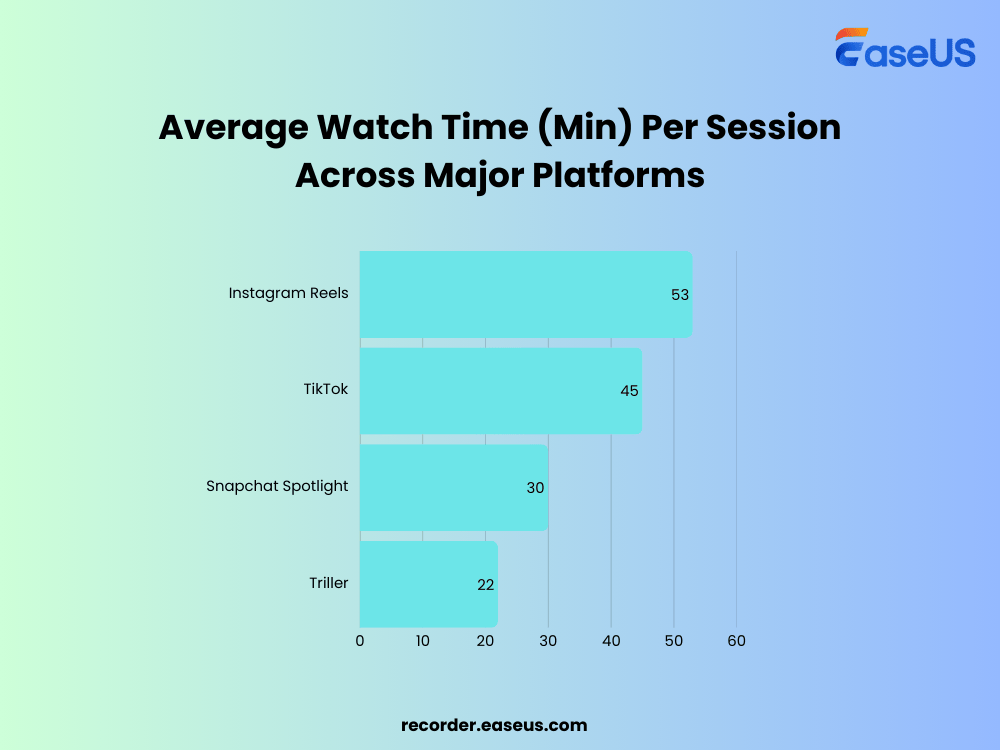
Content Consumption Preferences
- Entertainment: Music, dance, and comedy clips remain the most popular content categories.
- Creative: DIY, lifestyle hacks, and artistic content attract strong engagement from younger audiences.
- Educational: There is growing adoption of knowledge-based videos, with short-form video becoming an important channel for skills learning and information.
- Branded Content: Native ads, interactive ads, and creator-led collaborations are increasingly recognized and welcomed by users.
Cross-Platform Viewing Behaviors
- Multi-Platform Usage: Research by Pew Research shows that teens and young adults frequently use multiple platforms, especially TikTok, YouTube, and Instagram Reels, but content preferences and usage contexts vary by platform.
- Device Differences: Mobile users typically prefer short, snackable videos, while desktop users spend more time on educational or long-form short videos.
2.2 User Interaction Behaviors
The effectiveness of short-form video marketing is closely tied to authentic user interactions. From likes and comments to ad engagement and content re-creations, every layer of participation reflects measurable business value.
Engagement Rates: Likes, Comments, and Shares
- TikTok remains the leader in short-form video interaction. According to Fanpage Karma (2023–2024), TikTok's average engagement rate was around 0.70%, ahead of Instagram Reels (0.67%). Notably, Instagram's overall engagement has declined by nearly 45% compared to prior years.
- Instagram Reels still outperforms static formats. Vidico shows Reels drive engagement rates 22% higher than standard video posts, across likes, comments, and shares.
👉 These figures highlight that short-form content significantly outperforms static media in stimulating active audience interaction, thereby amplifying brand communication.
Ad Interaction Rates (CTR) and User Participation
- On TikTok, native ads achieve an average click-through rate (CTR) of 0.84%, higher than most traditional social platforms. This often translates into stronger ROI for advertisers. (Source: Social Champ)
- While CTR benchmarks vary by industry and region, overall, short-form video ads demonstrate superior attention-to-conversion efficiency, making them an increasingly favored channel for performance-driven campaigns.
Content Re-Creation and Viral Distribution
- A research study published on arXiv shows that since the launch of YouTube Shorts, creators, particularly new channels, significantly increased their short-form uploads. These Shorts consistently outperform traditional long-form videos in views and likes, though they tend to generate slightly fewer comments.
- Generative sharing behaviors, such as remixing, duets, mashups, or re-uploads, serve as a core viral driver of the short-form ecosystem. The simplicity and brevity of content make it more likely to be re-created and circulated, extending brand visibility beyond its original reach.
💡Key Insights
1. High Engagement Rates: Platforms like TikTok and Instagram Reels sustain stronger interaction levels than static or long-form formats.
2. Ad Effectiveness: Elevated CTR and ROI underscore short-form video’s dual role in awareness and conversion.
3. Re-Creation Dynamics: User-driven content remixing accelerates viral distribution, broadening the marketing impact of brand campaigns.
2.3 User Segmentation & Marketing Value
Short videos attract diverse audiences whose age, interests, and regional context directly shape their marketing value. Understanding these distinctions is crucial for brands seeking to optimize engagement, conversions, and ROI.
Age Segments and Consumption Potential
- Young Users (18–24 years):
This group represents the core audience on platforms like TikTok, accounting for more than one-third of its user base. They show high receptivity to creative ads and interactive campaigns (e.g., challenges, duets), and are particularly effective in driving viral diffusion and brand advocacy. - Young Adults (25–34 years):
Oriented toward lifestyle and shopping-driven content, this segment delivers higher conversion rates. According to industry research, short-form video ads achieve conversion rates ~34% higher than traditional formats, with this demographic contributing the bulk of purchasing power. - Mature Users (35+ years):
While not the primary drivers of short-form video consumption, their presence is expanding, especially in niches like education, finance, and health. Their engagement tends to translate into trust-based conversions, valuable for high-involvement sectors.
Interest-Based Groups and Brand Fit
- Entertainment & Trend Seekers: Attracted to challenges, music, and humor-driven clips; responsive to emotional and playful campaigns, ideal for viral brand amplification.
- Knowledge & Skill Learners: Engaged with tutorials and educational content; more receptive to soft-brand integration and co-created educational material.
- Consumption-Driven Users: Highly active in product reviews and shopping-related content, directly fueling the “watch → purchase” path that underpins short-video commerce.
Regional Variations and Market Potential
- North America & Europe: High advertiser spending with strong user expectations for quality and visually polished content.
- Asia-Pacific: Fastest-growing user base, especially in India and Southeast Asia, where short-form video dominates entertainment and information consumption, creating new-market entry points.
- Emerging Markets (Latin America, MENA): Smaller but expanding bases, offering long-term growth potential with rising mobile-first adoption.
Marketing Value Insights
Survey data indicates strong purchase behaviors post-exposure to short-form ads:
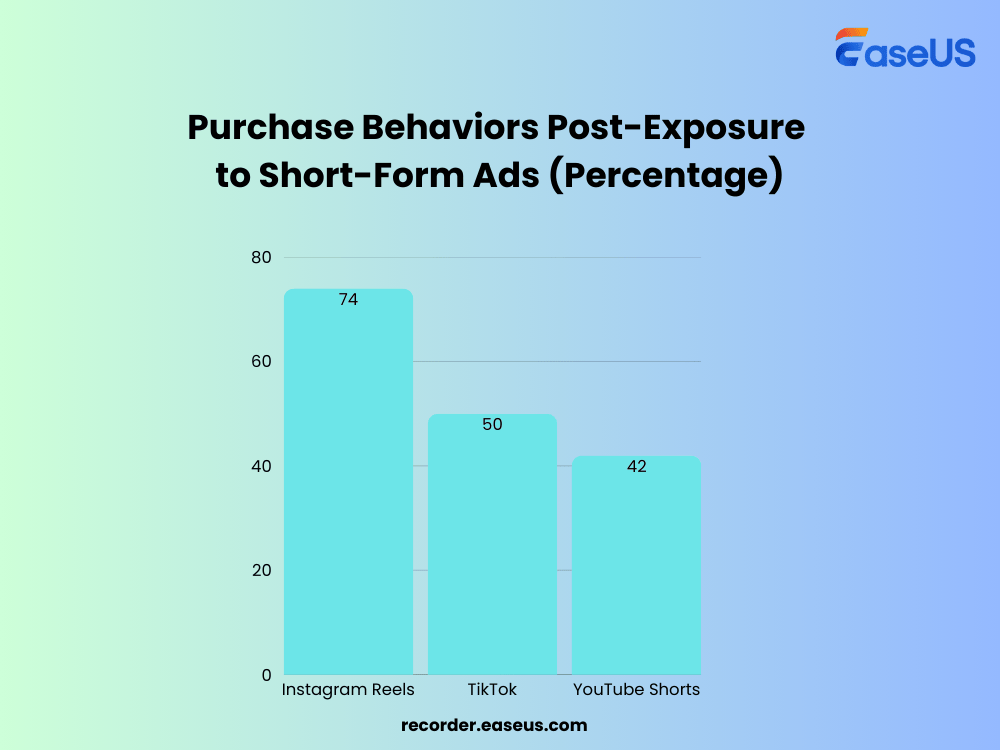
- Instagram Reels: 74% of users report purchase actions.
- TikTok: 50% of users report product purchases.
- YouTube Shorts: 42% of users report conversions.
(Sources: Sprinklr, SproutSocial, Zebracat)
🚩Summary Table: User Segments and Marketing Value
| User Group | Platform Preference | Content/Ad Fit | Marketing Value |
|---|---|---|---|
| 18–24 (Gen Z) | TikTok (dominant demographic) | Entertainment, creative, interactive formats | High virality & brand advocacy |
| 25–34 (Young Adults) | Instagram Reels, TikTok | Lifestyle, shopping-driven, high-quality visuals | Strong purchasing power, high conversion rates |
| 35+ (Mature Users) | YouTube Shorts, Facebook Video | Education, finance, health, professional content | Trust-based, valuable for high-consideration secto |
| APAC Market | TikTok, Reels | Entertainment + product discovery | Rapid growth, strong entry opportunity |
| North America/Europe | Instagram Reels, YouTube Shorts | Visually polished, high-production-value campaigns | Premium audience, high ad spend |
Found this report insightful? Share it with your peers and spark the conversation.
3. Short-Form Video Marketing Strategies and Brand Practice
Beyond audience behavior, brand practice defines success, here we examine advertising models, influencer collaborations, and monetization tactics shaping how marketers unlock commercial value through short-form video marketing.
3.1 Advertising Models in Short-Form Video Marketing
Short-form video advertising has become a core component of modern brand strategy, with diverse placement models tailored to both engagement and conversion.
Key Advertising Formats
- Native Ads: Seamlessly integrated into platform content, offering a less disruptive and more authentic user experience that improves acceptance and conversion.
- Hashtag Challenges: Interactive campaigns that invite user participation, significantly boosting brand visibility and organic content creation.
- Brand Placement: Subtle integration of branded elements within user-generated content (UGC), reinforcing brand identity and trust.
- Live Commerce (Livestream Shopping): Combines real-time engagement with instant purchase links, driving immediate sales impact.
Placement Strategies
- Creative Content: Ads must be engaging, visually distinctive, and authentic to capture attention and stimulate participation.
- Timing Optimization: Launching ads during peak user activity periods maximizes exposure and watch-through rates.
- Frequency Management: Adjusting ad frequency based on user feedback and performance data helps prevent ad fatigue while maintaining visibility.
ROI Insights
Short-form video consistently delivers one of the highest returns on investment (ROI) among all content types.
- According to Wyzowl (2025), 93% of marketers report positive ROI from video marketing.
- Around 31% of marketers rank short-form video as delivering the highest ROI, surpassing images (22%) and other content types.
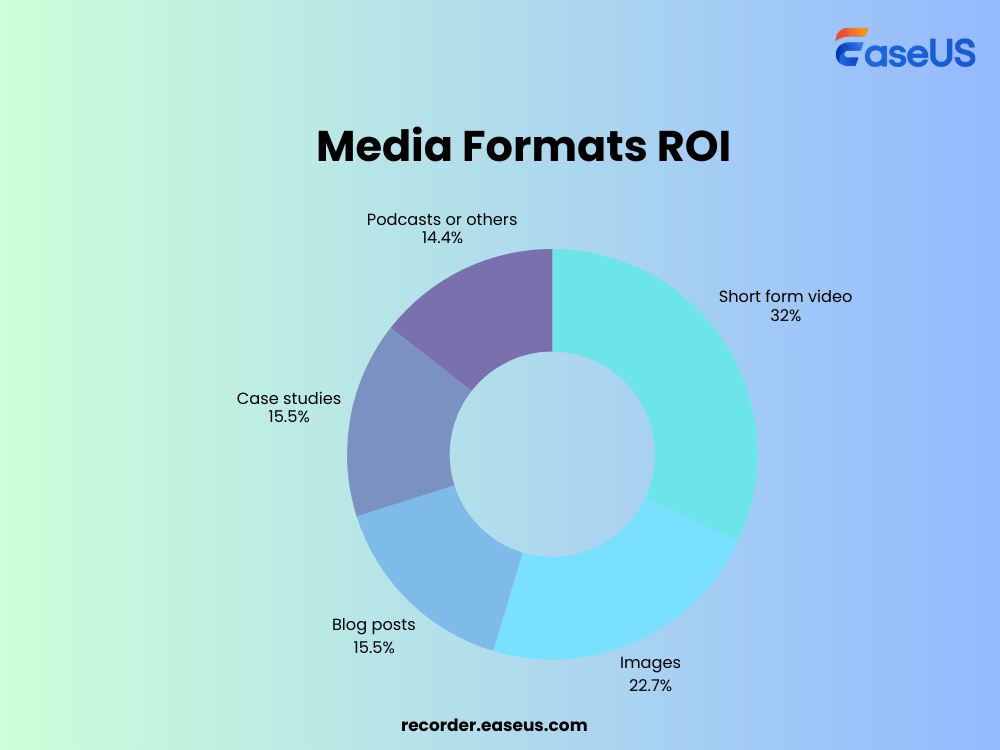
3.2 Creator–Brand Collaboration Models
Partnerships with creators have become a cornerstone of short-form video marketing, enabling brands to tap into built-in communities and deliver authentic messaging. The main collaboration models include:
- KOL / Influencer Marketing: Collaborating with influential creators who leverage their large and loyal follower base to amplify brand visibility and credibility.
- Brand–UGC Partnerships: Encouraging users to generate content around branded challenges, campaign hashtags, or creative contests, thereby strengthening engagement and loyalty.
Case Examples:
- TikTok Challenge – Chipotle: By partnering with TikTok creators to launch a branded challenge, Chipotle significantly boosted both brand awareness and user participation.
- Instagram Branded Campaigns: Collaborations with Instagram creators enabled brands to launch interactive campaigns that successfully enhanced brand recognition and community engagement.
3.3 Monetization & Commercial Value
Short-form video platforms are rapidly expanding their monetization capabilities, creating new revenue streams for both platforms and brands.
- Ad Monetization & Platform Revenue: For example, Snapchat reported $1.41 billion in ad revenue in Q4 2024, a 10% year-over-year increase, driven by improvements in its ad platform and rising demand for direct-response advertising (Source: The Hollywood Reporter).
- User Payments & Tipping Models: Features such as tipping and paid subscriptions empower users to financially support creators, while also creating new marketing opportunities and brand-collaboration channels.
- Trends in Brand Value: Short-form video marketing is expected to continue its growth trajectory. To stay competitive, brands will need to consistently innovate in both content formats and engagement strategies, leveraging creator partnerships and interactive monetization tools.
Found this report insightful? Share it with your peers and spark the conversation.
4. Technology and Innovation Trends
The growth of the short-form video industry is increasingly powered by technological innovation - from creation tools and recommendation algorithms to immersive experiences - all of which are reshaping brand marketing strategies.
4.1 AI-Powered Creation and Personalized Recommendations
Generative AI tools, such as TikTok's Symphony, enable advertisers to quickly generate scripts, translate videos, and even create AI avatars. These capabilities make creative production more efficient and tailored to audiences. At the same time, AI-enhanced recommendation engines and productivity tools significantly improve content visibility and viewing depth. (Source: Business Insider)
4.2 Editing, Subtitles, and Interactive Tools
Lightweight editing applications like CapCut and Meta's Edits are revolutionizing creator accessibility. With AI-powered effects, automated subtitles, and real-time analytics, creators can produce professional-quality short videos without advanced technical expertise.
4.3 Data-Driven Analytics and ROI Optimization
AI-enabled platforms increasingly leverage data-driven features such as automated thumbnail generation, content tagging, and publishing-time optimization. These tools help brands deliver more precise targeting and improve campaign ROI.
4.4 AR/VR and Interactive Short-Form Experiences
Immersive technologies are opening new frontiers for short-form marketing:
IKEA's AR furniture placement tool boosted customer purchase confidence and led to a 94% increase in conversion rates.
Fashion and beauty brands such as Gucci and Sephora have adopted AR filters and virtual try-ons, enhancing both engagement and brand perception. (Source: AOK MARKETING)
💡Insight:
These innovations are injecting fresh creative energy into the short-form video ecosystem, driving the industry into a new era of intelligent, interactive, and immersive marketing.
5. Challenges and Risks
As short-form video marketing accelerates, both brands and platforms face a set of structural risks and operational challenges:
Content Overload & Ad Fatigue
The abundance of branded content increases the risk of audience fatigue. Oversaturation can reduce engagement rates, weakening the effectiveness of ad campaigns.
Copyright and Compliance Risks
Cross-border campaigns face heightened legal scrutiny, especially in the use of UGC content and licensed music. Brands must carefully navigate platform policies and local regulations to avoid infringement and compliance violations.
Data Privacy and Targeting Restrictions
With growing global focus on data protection, brands need to ensure compliance in user targeting and analytics. Regulations such as GDPR and platform-level privacy controls (e.g., Apple's ATT, Meta's ad restrictions) continue to reshape advertising precision.
ROI Measurement Uncertainty
Measuring campaign effectiveness remains complex. Conversion outcomes are heavily influenced by user behavior, creative quality, and algorithmic distribution, making ROI projections less predictable compared to traditional channels.
Platform Policy & Geopolitical Risks
Shifts in platform policies and external regulation can directly disrupt marketing strategies:
- TikTok faces a potential ban in the U.S., creating uncertainty for advertisers relying on the platform.
- Instagram has introduced "less personalized ads" options in Europe, potentially weakening the effectiveness of targeted campaigns.
Insight: These risks highlight the importance of adaptive strategies, diversified platform investment, and compliance-first marketing. Brands must remain agile to mitigate uncertainties while sustaining growth in short-form video marketing.
6. Conclusion and Future Outlook
In 2025, global short-form video marketing continues its rapid growth, with brand advertising and creator collaboration models becoming increasingly mature. Key insights indicate that short-form video has emerged as a crucial channel connecting users and brands. Creative, interactive content is particularly effective in engaging younger audiences and mobile users, driving higher participation and conversion rates.
User behavior and content trends reveal that high-quality, personalized, and interactive content captures attention most effectively. When combined with data-driven campaign optimization, brands can maximize ROI while mitigating ad fatigue.
Looking ahead, opportunities in short-form video marketing are concentrated in three areas:
- Cross-Platform Integrated Marketing – Expanding reach and brand exposure across multiple platforms.
- Short-Form E-Commerce & Live Commerce – Driving stronger conversion rates and immediate sales impact.
- Creative Interactive Content & AR/VR Applications – Enhancing user engagement and brand loyalty through immersive experiences.
Strategic recommendations for brands and advertisers include:
- Optimize content creativity and publishing schedules, leveraging data analytics to guide campaign delivery.
- Build long-term collaborations with creators to fully tap into the potential of UGC marketing.
- Stay informed on platform policies and technological innovations to maintain flexibility in strategy.
For platforms, priorities should focus on enhancing ad products, improving user experience, and strengthening compliance and data privacy measures, ensuring a healthy ecosystem and sustainable commercial growth.
Found this report insightful? Share it with your peers and spark the conversation.
Was This Page Helpful?
